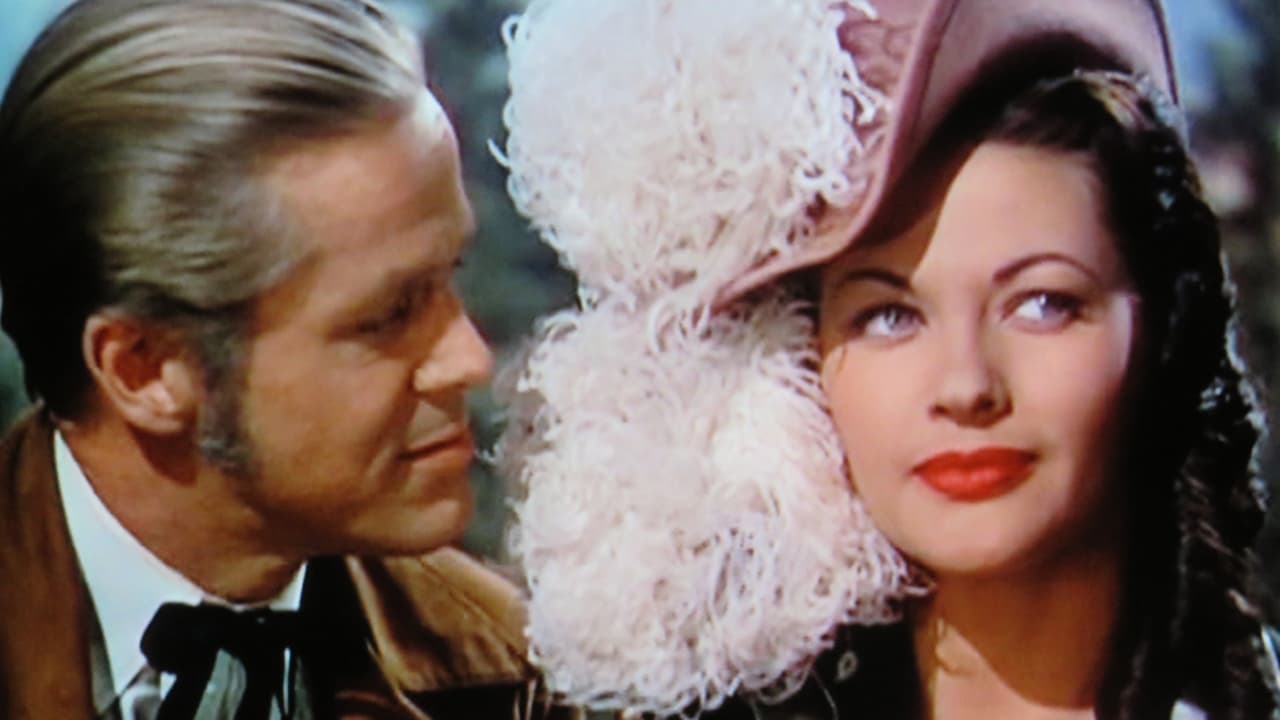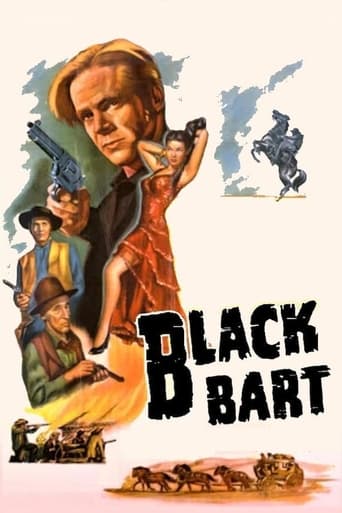

What makes it different from others?
... View MoreOk... Let's be honest. It cannot be the best movie but is quite enjoyable. The movie has the potential to develop a great plot for future movies
... View MoreAmazing worth wacthing. So good. Biased but well made with many good points.
... View MoreThe movie's not perfect, but it sticks the landing of its message. It was engaging - thrilling at times - and I personally thought it was a great time.
... View MoreCopyright 24 March 1948 by Universal Pictures Co., Inc. New York opening at the Winter Garden: 3 May 1948. U.S. release: April 1948. U.K. release through Eros (the film was turned down by Rank): floating from November 1949. Australian release: 12 August 1948. 7,247 feet. 80 minutes. U.K. release title: BLACK BART, HIGHWAYMAN.SYNOPSIS: This film is based on the adventures of Charles E. Bolton, poet-highwayman who committed 28 hold-ups before he was apprehended, and Lola Montez, the internationally famous dancer. That they ever did meet is not impossible but highly improbable, for Lola was touring the U.S. under the direction of P. T. Barnum at the time Black Bart was on the rampage. This is a dashingly-played (particularly by Dan Duryea and lovely Yvonne De Carlo), fast-moving and very exciting melodrama, very competently directed with appealing Technicolor photography. - E.V.D.COMMENT: Quite an entertaining "B", photographed in most attractive Technicolor by Irving Glassberg, this classy Universal entry features an interesting and highly rewarding group of players, led by Yvonne De Carlo, Dan Duryea, Jeffrey Lynn and Percy Kilbride. Very capably directed by George Sherman from a taut, well-constructed and peopled-with-interesting-characters screenplay (to which William Bowers doubtless made a major contribution), Black Bart (despite its off-putting title) rates as a must-see western.
... View MoreLegendary characters of the wild west often get the same treatment in the movies. Their crimes are made understanding by the writers who show them as wronged heroes who turn against the law to right the wrongs done to them. Jesse James, Belle Starr, Billy the Kid, among many others, got lush colorful movies made about them that when you do real research on them seem totally fictionalized. In many cases, their lives other than their criminal proclivities were rather boring, so to make a good movie, elements had to be added to make their lives seem more exciting other than the chase of the law that usually ended up with a shoot-out and the criminal's violent death. Dan Duryea, one of the great movie scoundrels of the 1940's, is very credible as the titled character, a nobleman who turned to crime and during one of his stagecoach robberies came across the elegant Lola Montez, the famous Spanish dancer.The camera loves Yvonne de Carlo, seen here wearing tons of make-up and ruby red lipstick, but looking gorgeous as Lola, knowing his true identity, but keeping his secret after he returns one of her valuable jewels to her. Duryea's rival for her affections happens to be his old friend Jeffrey Lynn who is on the stagecoach when Duryea makes his attempts. Percy Kilbride offers amusing side-kick comedy relief and is a step above the silliness of such old grizzled character actors such as Fuzzy Knight and Gabby Hayes. Gorgeous Technicolor photography adds well to the many outdoor scenes, although it seems odd that De Carlo didn't recognize Duryea as the man who robbed her. In spite of a few minor short-comings, this is still very entertaining and fast moving. So take it as legend rather than truth (I could not locate any proof that Black Bart ever met Lola Montez) and simply enjoy the beautiful Yvonne (great in the dance sequences) and the wonderful adventure.
... View MoreYvonne de Carlo was a pretty girl, but somehow they gave her roles where she was supposed to be astonishing beautiful making all men fall for her. She wasn't that great, as a matter of fact very few are. "Salome Where She Danced" was one of the worst films I have ever seen and Black Bart saves itself because of a decent script and good actors like Dan Duryea, Jeffrey Lynn and Percy Killbride. Masked main characters at those times (1948) used to be heroes, like the Zorro and the Durango Kid. They wore their masks to defend poor people's rights, or the law. In Black Bart, Duryea's mask is for pure self interest, but in the film he is not quite the bad guy, the spectator will sympathize with him. In those westerns where the outlaw was the hero, he either had to die at the end, or go to jail for a number of years, with his woman waiting for him. That made them different from the standard "good guy happy ending". Conclusion: any western with Dan Duryea, the eternal Waco Johnnie Dean (Winchester 73) is worth seeing, even this average one.
... View MoreThis film manages to be relatively non-formulaic, and even more non-historical, though the real Black Bart was indeed named Charles E. Boles as portrayed. British-born Boles, however, did not conduct his outlaw career as a Zorroesque black-clad horseman, but hiked to all his holdups and wore a long linen duster, with a flour sack over his head. He was also pushing 50 when he started robbing the stage. So much for a romantic image! If the intention was to make Bart/Boles a dashing figure, I think another actor would have been a better choice than Dan Duryea, who after all pretty much built his career on playing creeps. But it's always interesting to see a departure, and the script is more clever than that of the routine horse opera of the day.As Lola Montez, Yvonne De Carlo makes no effort at a real characterization of the famous Countess (former mistress to Ludwig I of Bavaria), but acts-- well, like Yvonne De Carlo, delivering her lines in her usual flat New World tones. The witty, volatile and multilingual Lola (nee Eliza Gilbert), though Irish by birth, affected a sort of Spanish accent to go with her assumed Sevillian identity. De Carlo's dancing, I fear, bears little resemblance to Lola's, but it's always a pleasure to watch Yvonne in her early roles; this film came only three years after her dazzling debut in 1945's "Salome, Where She Danced", in which she played a quasi Lola Montez, thereby confusing the record considerably.In reference to this: the real Lola never danced as Salome nor visited Arizona, and the town there called "Salome, Where She Danced" was named in 1904, and for quite another lady. To play Lola or a quasi-Lola, De Carlo does certainly fit the bill visually as a stunning blue-eyed brunette with a memorable figure. As to Lola ever encountering Black Bart-- well, when he began his career as a highway robber in 1875 Lola had been in her grave for fourteen years. So much for romance!
... View More